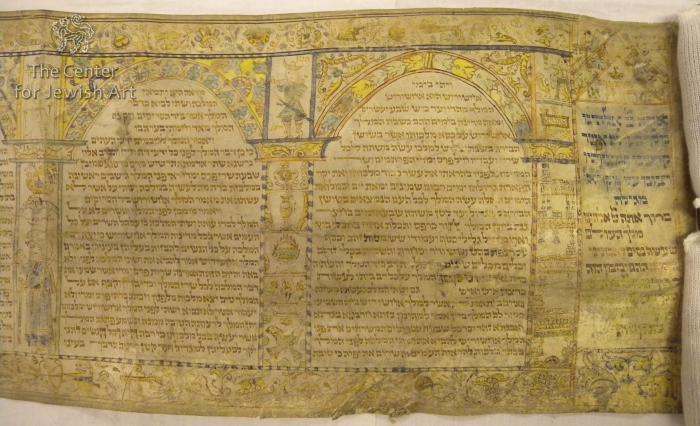
The third benediction is barely visible.
The scroll opens with a rectangular prefatory panel containing initial benedictions. The opening word of the first blessing is written in large letters in a triangle tympanum. that is followed by the columns of text written within arches. They are decorated with various floral motifs and they are separated by columns filled with a variety of motifs including. Between the arches can be the king seated on a throne with a goblet in his hand, Haman with a saber named in Hebrew - המן, a hanged man who is named in Hebrew too, but the inscription is barely visible (he can be Bigthan). Below the first two depictions are several temple implements and two fish, and below the last depiction, a rooster, and a Jewish man with tefillin on his head while praying is shown. In the lower margin, besides floral motifs, a hunting scene is shown.
The Book of Esther in Hebrew preceded by the initial benedictions for the Megillah reading.
The columns of text in the scroll contain 23 lines each. The lines fit the shape and size of the panels and they vary in length.
The text is written in Hebrew square Ashkenazi stam script with tagin in dark brown ink on parchment membranes that are rather suede, and grey.
The letter ח (Es. 1:6) and ת (Es. 9:29) is highlighted by its form and size. It is larger than an average letter in the scroll, formed of two parts joined with a roof, and decorated with scrolled feet.
The four letters of the name of God are enlarged and bolded.
The ruling is slightly visible.
The pricking is invisible.
The membranes in the scroll are stitched together.
None
The scroll features details painted in intense yellow color.
The text panels vary in width.
No bibliography on the scroll is available.



